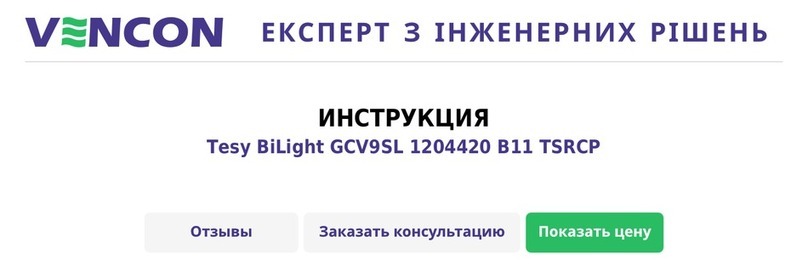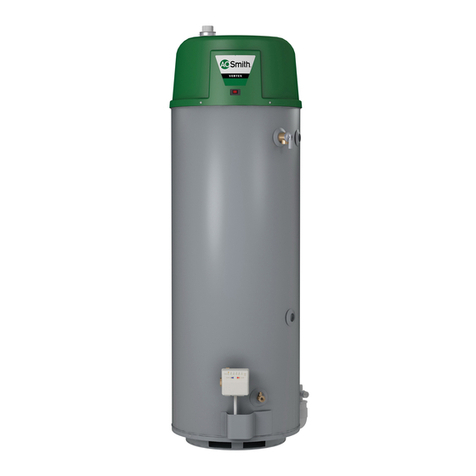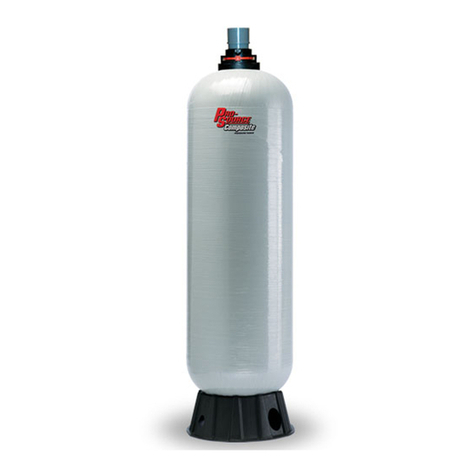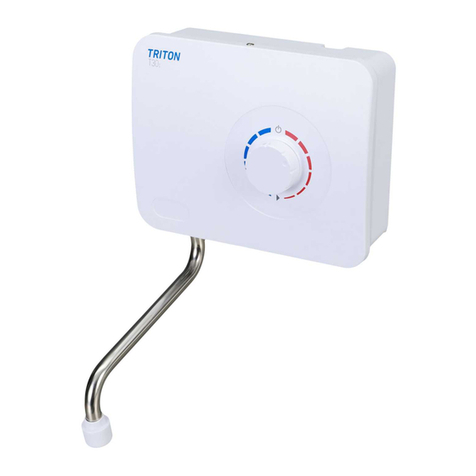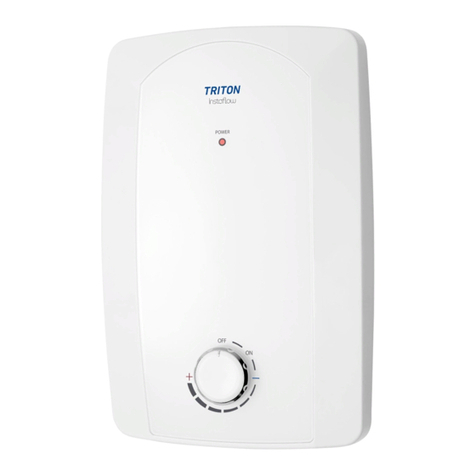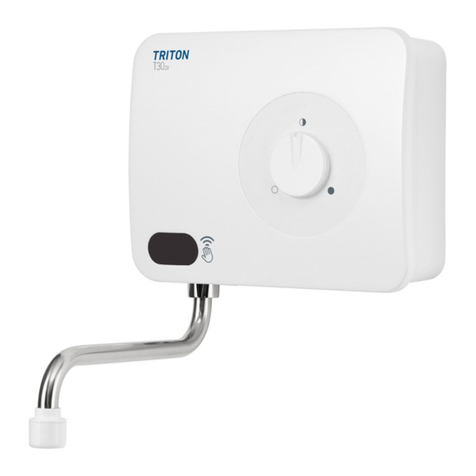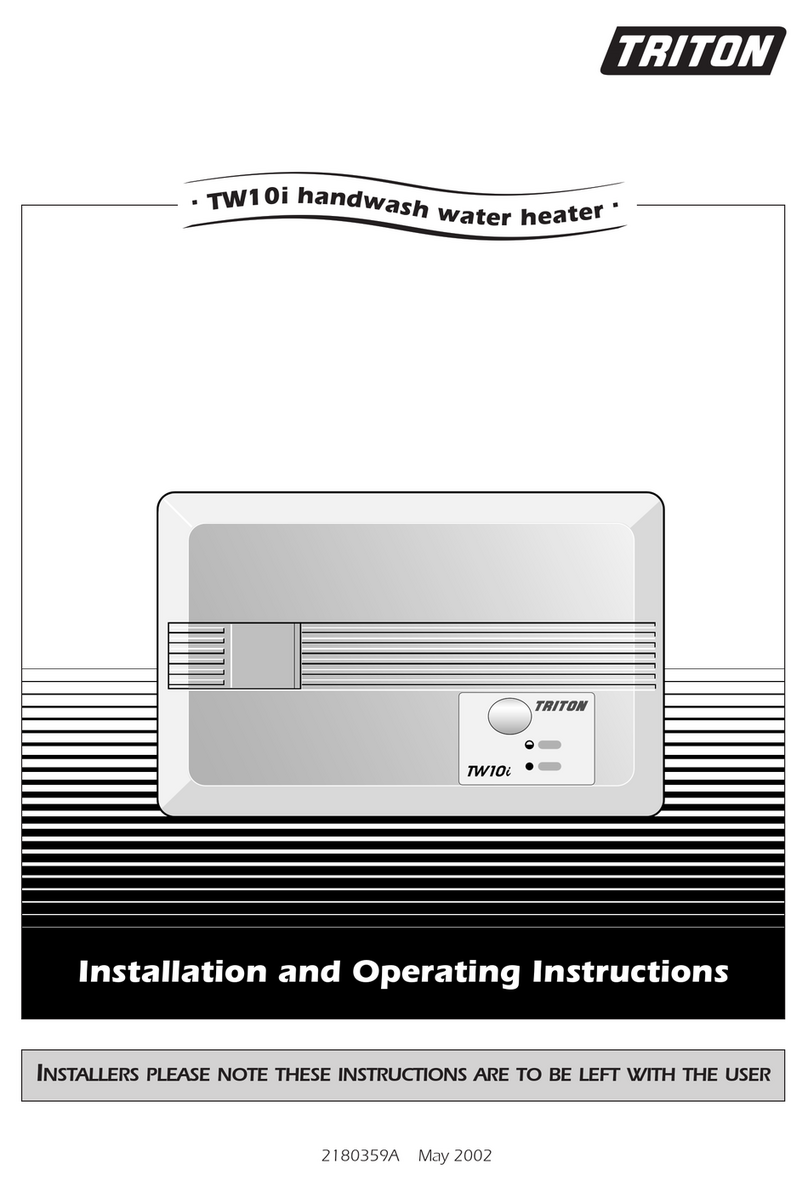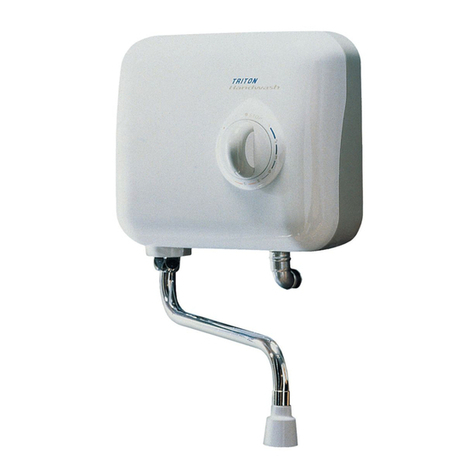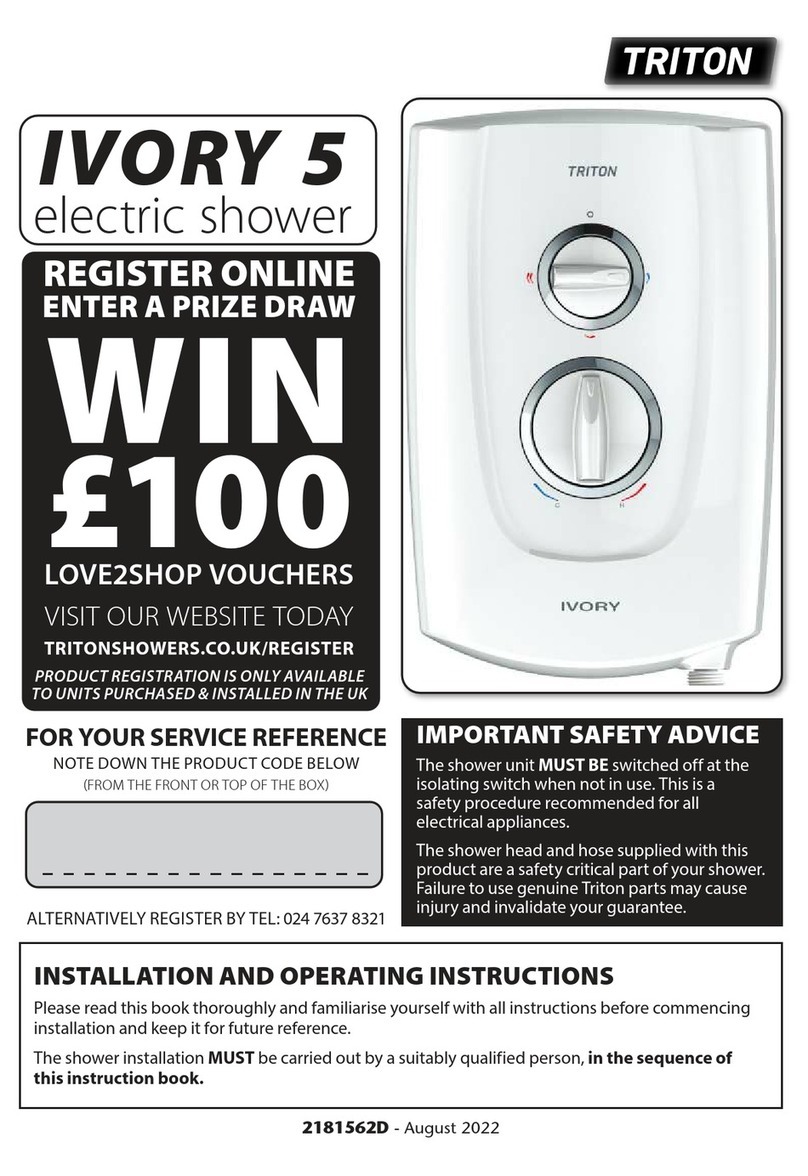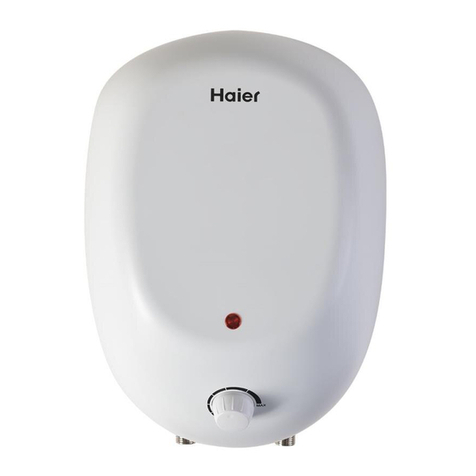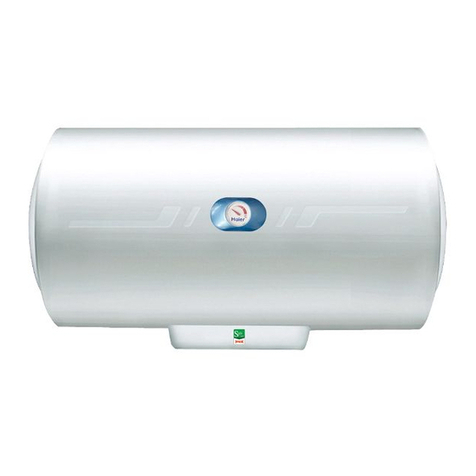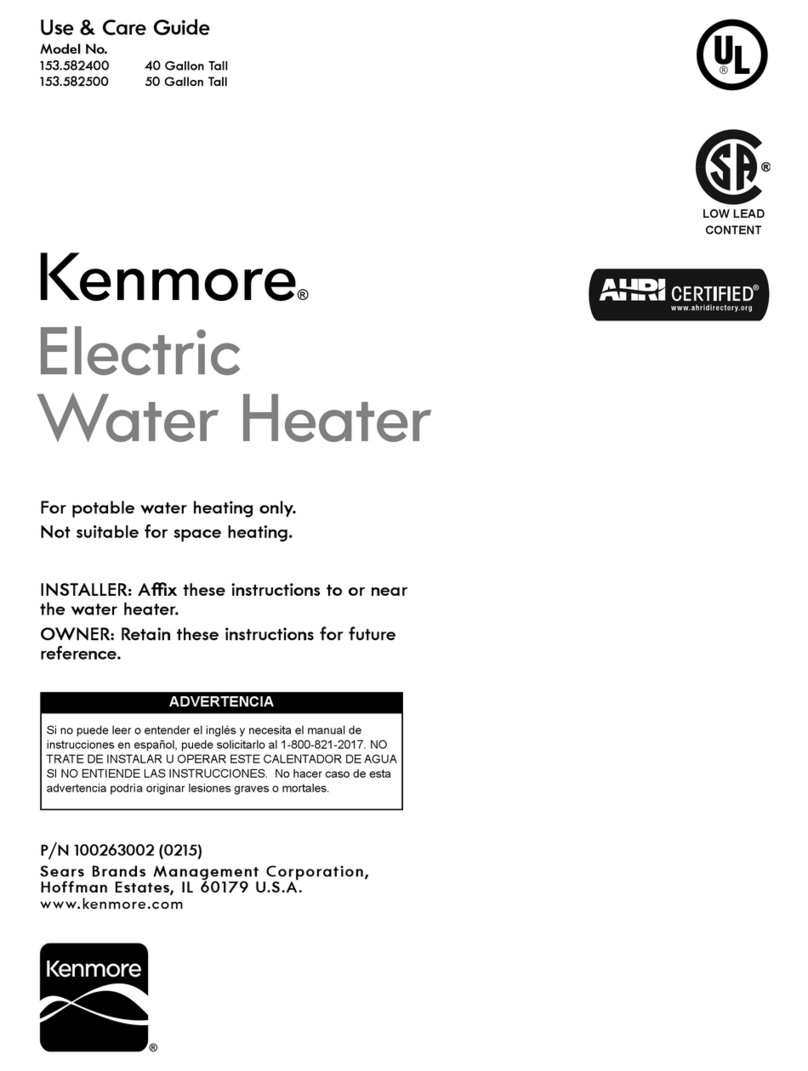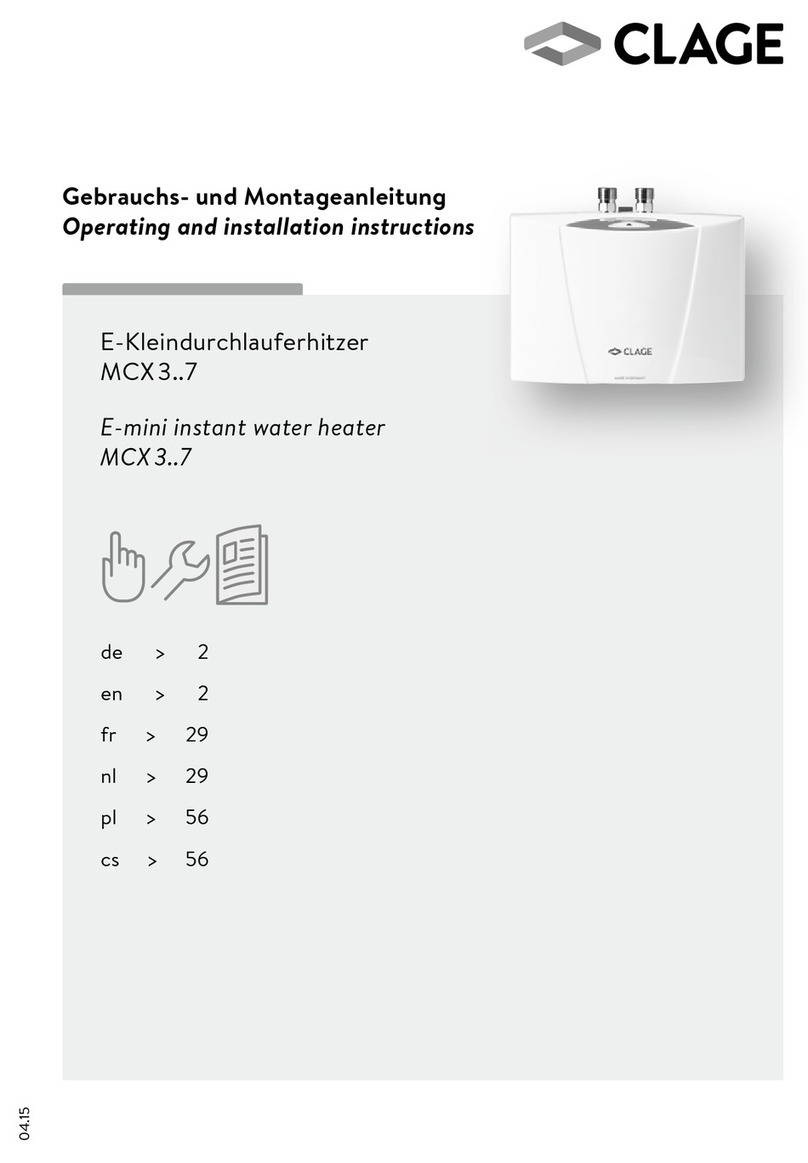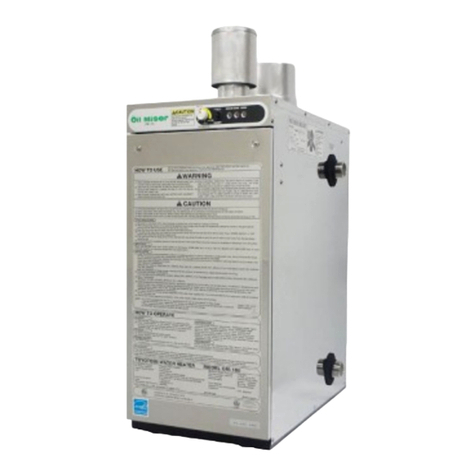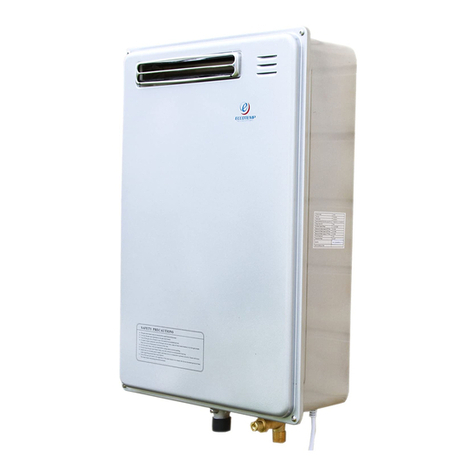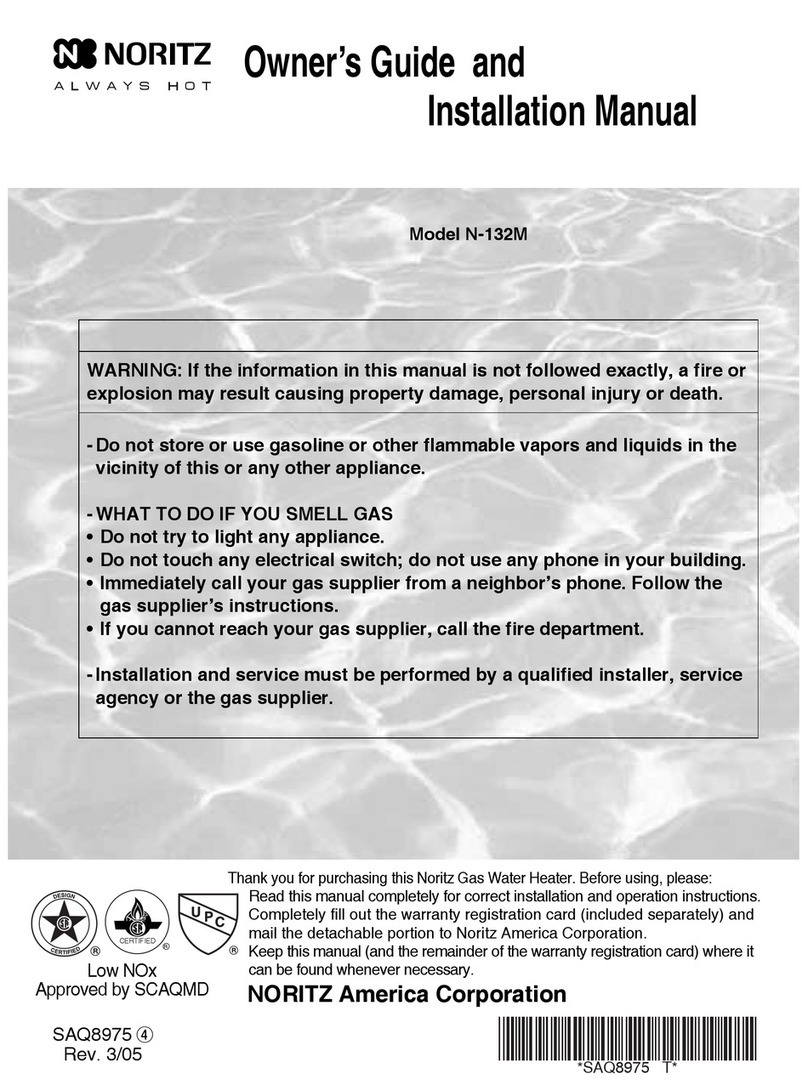Products manufactured by Triton are safe and without risk provided they are installed, used and
maintained in good working order in accordance with our instructions and recommendations.
WARNING: DO NOT operate the handwash if frozen, or suspected of being frozen. It must
thaw out before using.
DO NOT operate the unit if the spray arm becomes damaged.
DO NOT restrict flow out of spray arm by placing arm in direct contact with your body.
DO NOT operate the unit if water ceases to flow during use or if water has entered inside the
unit because of an incorrectly fitted cover.
WARNING: If restarting the handwash immediately after stopping, be aware that a slug
of hot water will be expelled for the first few seconds.
PLEASE READ THIS IMPORTANT SAFETY INFORMATION
A-001-A
1
1.1
1.2
1.3
1.4
1.5
1.6
a)
b)
c)
1.7
1.8
1.9
2
2.1
2.2
2.3
2.4
2.5
2.6
3
3.1
3.2
3.3
3.4
GENERAL
Isolate the electrical and water supplies before
removing the cover.
Read all of these instructions and retain them
for later use.
DO NOT take risks with plumbing or electrical
equipment.
Isolate electrical and water supplies before
proceeding with the installation.
The unit must be mounted onto the finished
wall surface (on top of the tiles). Do not tile up
to unit after fixing to wall.
Contact Customer Service (see back page), if
any of the following occur:
If it is intended to operate the unit at pressures
above the maximum or below the minimum
stated.
If the unit shows a distinct change in
performance.
If the unit is frozen.
If it is intended to operate the unit in areas of
hard water (above 200 ppm temporary
hardness), a scale inhibitor may have to be
fitted. For advice on the Triton Scale Inhibitor,
contact Triton Customer Service.
The arm must be cleaned regularly with
descalent to remove scale and debris,
otherwise restrictions to the flow on the outlet
of the unit will result in higher temperatures
and could also cause the Pressure Relief Device
in the unit to operate.
This product is not suitable for mounting into
steam rooms or steam cubicles.
PLUMBING
The plumbing installation must comply with
Water Regulations, Building Regulations or any
particular regulations as specified by Local
Water Company or Water Undertakers and
should be in accordance with BS 6700.
The supply pipe must be flushed to clear
debris before connecting to the unit unit.
DO NOT solder pipes or fittings within
300mm of the unit unit, as heat can transfer
along the pipework and damage components.
DO NOT fit any form of outlet flow control as
the outlet acts as a vent for the heater can.
DO NOT use excessive force when making
connections to the arm.
All plumbing connections must be completed
before making the electrical connections.
ELECTRICAL
The installation must comply with BS 7671
‘Requirements for electrical installations’ (IEE
wiring regulations), building regulations or any
particular regulations as specified by the local
Electrical Supply Company.
This appliance MUST be earthed.
In accordance with ‘The Plugs and Sockets etc.
(Safety) Regulations 1994’, this appliance is
intended to be permanently connected to the
fixed wiring of the electrical mains system.
Make sure all electrical connections are tight
to prevent overheating.
Fuses do not give personal protection against
electric shock.
A 30mA residual current device (RCD) MUST
be installed in all UK electric and pumped unit
circuits. This may be part of the consumer unit
or a separate unit.
Switch off immediately at isolating switch if
water ceases to flow during use.
Other electrical equipment i.e. extractor fans,
pumps must not be connected to the circuits
within the unit.
Switch off at isolating switch when not in use.
This is a safety procedure recommended with
all electrical appliances.
As with all electrical appliances it is
recommended to have the unit and
installation checked at least every two years by
a competent electrician to ensure there is no
deterioration due to age and usage.
3.5
3.6
3.7
3.8
3.9
3.10
